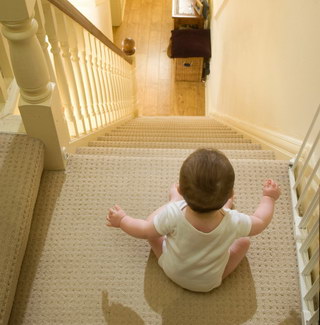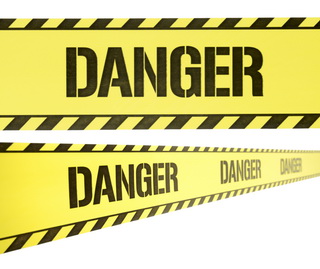From the moment of birth, children are on a full sprint toward adulthood. Parents may acclimate to a child’s abilities at a given time and feel they have taken all precautions needed to provide a safe environment. They are often surprised when a quantum leap in strength or speed shows itself by allowing a child to break through a protective barrier or gain access to a hazard that wasn’t a concern before.
Physical ability is not the only attribute that improves surprisingly fast; cognitive skills improve quickly as well. Unfortunately, good judgment does not accompany problem solving skills as they skip merrily down the path of development. A child may figure out how to defeat a barrier, but not know that it is dangerous to do so.
This leaves parents trying to head off the child’s ability to do self harm the best they can. This task can be daunting as children pose a higher risk for certain dangers. For example, the epidermis is not fully developed in infants, making them more susceptible to burns. Scalds are the leading cause of accidental death in the home for children from birth to age four. Infants may receive a third degree burn from a cup of very hot coffee in five seconds, where an adult may only receive a first degree burn, if any at all.
Fortunately, parents have some help in deciding which toys or products are appropriate for their children. Manufacturers follow certain guidelines in an effort to label most new products for specific age groups. The U.S. Consumer Product Safety Commission (CPSC) helps with this as it closely monitors and regulates toys and child products. Also, with the recent passing of the Consumer Products Safety Improvement Act (CPSIA), all children’s products require a tracking label. So, if a problem does occur, any needed recall can be implemented quickly and more effectively.
However, even with these progressive changes, there is difficulty in tracking/inspecting all new toys and products to the market. Thus, the Consumer Products Safety Commission (CPSC) relies heavily on the industry to police itself. But the CPSC is not alone in its efforts to protect children. For example, Cribs and Strollers are regulated not only by the CPSC but also the American Society for Testing and Materials (ASTM). Tricycles are regulated by the American National Standards Institute (ANSI) and Child Car Seats are regulated by the National Highway Traffic Safety Administration (NHTSA).
If you need help evaluating a product design, label or standard, the experts at CED Technologies can help by contacting one of our regional offices or a case manager at casemanager@cedtechnologies.com.






